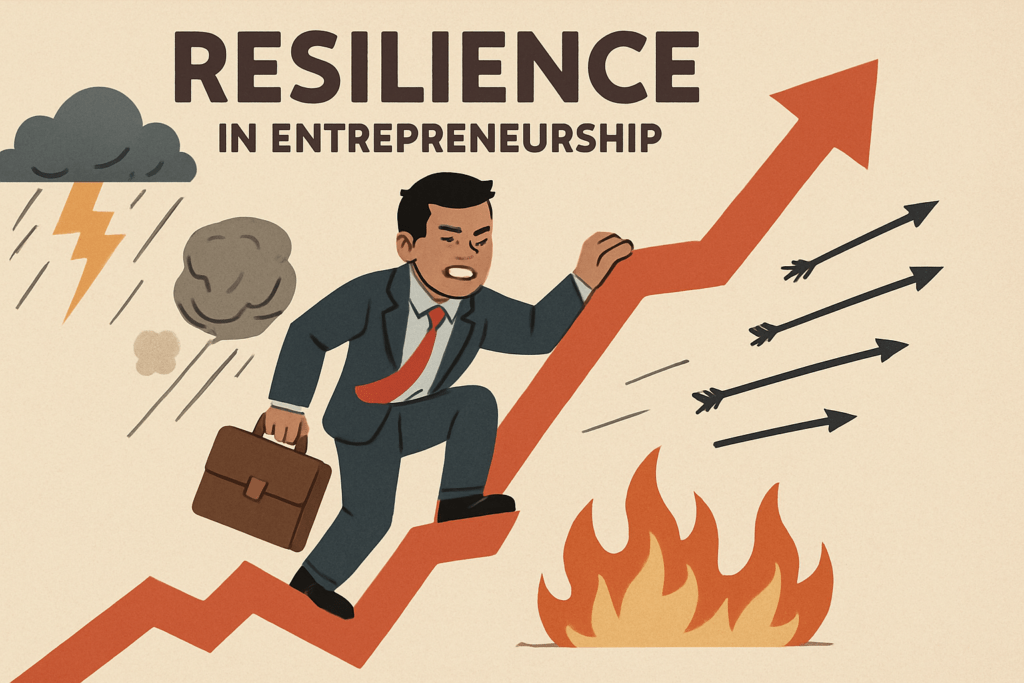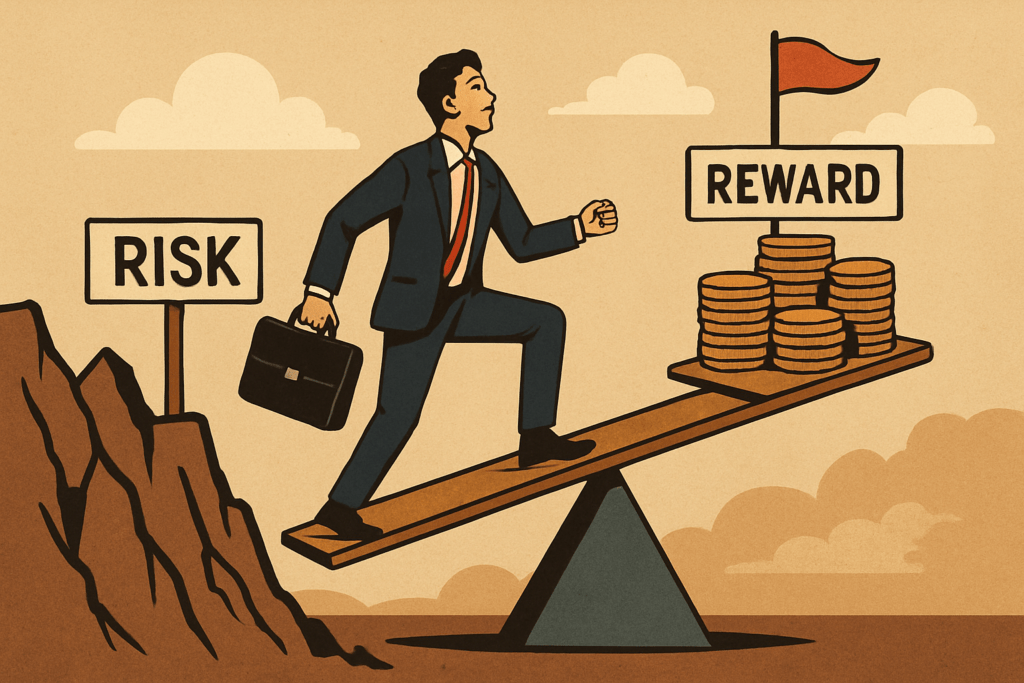Resilience in Entrepreneurship: How to Stay Strong When Business Gets Tough
- Introduce the reality: being an entrepreneur means facing challenges constantly.
- Lead with what “resilience in entrepreneurship” actually looks like—adapting, bouncing back, pushing forward.
- Briefly set up the roadmap for building and maintaining resilience.
Resilience in Entrepreneurship: How to Stay Strong When Business Gets Tough
Let’s be honest: entrepreneurship isn’t all coffee shops and visionary brainstorming. Most days, it’s more like wrestling with uncertainty, getting knocked down by setbacks, and still showing up the next morning. That’s the real face of the job—constant challenges, limited resources, and, occasionally, the creeping sense that it’s all on the line. If you’re running a business (or dreaming about starting one), resilience isn’t optional. It’s the non-negotiable trait that determines who survives tough times and who folds.
So what does “resilience in entrepreneurship” actually look like in practice? It means adapting—quickly—when the market pivots overnight. It means bouncing back after a big customer bails, or after your prototype flops, or when funding stalls. It means pushing forward, even when motivation dries up and fear creeps in. Resilient entrepreneurs aren’t superhuman. They just refuse to let rough patches define their trajectory.
This article outlines why resilience is the backbone of entrepreneurship, then breaks down the essential traits that power it. We’ll look at real-world obstacles and give you a simple, field-tested playbook to strengthen your resilience when things get tough. Stick around: you’ll walk away with tools—not just pep talk—to keep your business ambitions alive, even on the rough days.
What Happens After Winning Millions?
Winning a life-changing lottery jackpot is every player’s dream, but few are prepared for what comes next. The sudden influx of wealth can bring excitement, but also a wave of challenges. Many winners find themselves overwhelmed by financial decisions, from managing taxes to making smart investments. Some handle it well, while others struggle with reckless spending that drains their fortune faster than expected.
The Financial Reality of Winning
Many winners face critical financial decisions almost immediately:
- Taxes and Legal Issues
- A large chunk of the winnings often goes to taxes, and failing to plan can lead to legal troubles.
- Investing vs. Spending
- Some winners hire financial advisors to ensure long-term security, while others spend impulsively without a plan.
- Budgeting for the Future
- Without proper money management, even the biggest jackpots can disappear quickly.
A Lifestyle Overhaul
A sudden fortune changes life in more ways than one:
- Luxury Purchases
- Mansions, sports cars, and extravagant vacations become instantly affordable.
- Social Pressure
- Long-lost friends and distant relatives often reappear, expecting a share of the winnings.
- Privacy Challenges
- Some winners struggle with unwanted media attention and public scrutiny.
While some winners embrace their new wealth openly, others choose to live discreetly to avoid pressure and expectations.
Giving Back and Creating a Legacy
For some, wealth is not just about personal luxury—it’s an opportunity to make a difference. Many winners choose to:
- Donate to charities and community projects
- Fund scholarships or support education initiatives
- Invest in businesses that create jobs and opportunities
Some lottery winners go from players to philanthropists, proving that wealth can be used to leave a lasting impact. However, not all stories end positively—many who fail to manage their winnings properly find themselves bankrupt within years.
The Nature of Entrepreneurial Obstacles
Let’s not sugarcoat it: running your own business means running headfirst into problems. Funding gaps? Nearly every founder has scrambled to make payroll or watched an investor ghost at the worst possible time. Market shifts? Whole industries can pivot overnight—suddenly what you’ve built is out of step, and the race to adapt is on. Then there are internal challenges: hiring the wrong person, losing a key teammate, or grappling with team burnout. Overcoming obstacles like these isn’t a special case; it’s just part of the deal in tough business environments.
All entrepreneurs face this gauntlet. Feeling stuck or overwhelmed is normal, not a personal failing. The playing field changes constantly—what matters is not if trouble appears, but how you respond. Obstacles aren’t a detour from the path; they’re part of it. If you’re wrestling with setbacks right now, take a breath: you’re in solid company. The foundation for success starts with expecting difficulty and choosing, again and again, to push through it.
Proven Strategies for Perseverance
Here’s the straight truth: no matter how passionate or clever you are, the entrepreneurial journey will hand you hard days—sometimes weeks or months of them. The difference-makers? Consistency, clarity, and a toolkit of perseverance strategies that actually hold up when you want to pack it in.
First, shrink the mountain. Big, daunting goals get chopped into daily, manageable steps. Your business plan might stretch for years, but focus every day on what you can control right now. Complete one invoice, pitch one new customer, solve one issue with your product. Small wins stack up, and before you know it, momentum builds.
Second, don’t bet everything on flashes of motivation. Build a routine based on discipline. Motivation comes and goes, but habits—waking up early, checking your numbers, reaching out to your network—get you through the dry spells. Set simple, repeatable actions. Make them almost boring. That’s where the magic happens.
Third, seek support early and often. Other founders, mentors, and even competitors can be sounding boards or lifelines. Join founder meetups, create a peer group, or just grab coffee with someone who gets it. They’ve rode out their own tough business environments and can offer a shortcut over obstacles you haven’t thought about.
Fourth, learn to treat failure as data, not damnation. If something goes wrong, resist the urge to quit or wallow. Instead: pivot. What message did customers send you by not biting? What process broke down? The best perseverance strategies turn stumbles into blueprints for a smarter next step, not reasons to quit.
It’s not complicated. It’s not always pretty. But it works—and it’ll keep you standing when most would have walked away.
Resilience in Action: Inspiring Entrepreneur Examples
You can talk about resilience all day, but nothing drives it home like seeing real entrepreneurs claw their way out of a tough spot. Take Sara Blakely, founder of Spanx. She faced rejection from pretty much every hosiery manufacturer in the U.S. before one finally took a chance. Instead of giving up, she reframed the “no’s” as feedback, tweaked her pitch, and kept going. That edge—that willingness not just to endure but to adjust—helped her turn a $5,000 idea into a billion-dollar business.
Look at Brian Chesky and the original Airbnb team. When the 2008 financial crisis gutted their bookings, they could’ve thrown in the towel. Instead, they doubled down on their vision, sold novelty cereal to raise cash, and kept hunting for product-market fit. They didn’t see obstacles as stop signs—they saw experiments and stepping stones.
Resilience isn’t about one dramatic comeback. It’s an ongoing muscle, built every time you take a hit and choose to learn, not retreat. The best founders don’t just handle risk—they lean in, find a lesson, and move one brick higher. For more trend insights and gutsy founder stories, check out Startup Pulse’s key startup trends.
Building Your Own Entrepreneurial Resilience Toolkit
Let’s get tactical. Resilience isn’t just a buzzword—it’s a muscle. And like any muscle, you build it daily, with a toolkit tailored to what actually works for you. Here are a few tools to keep on hand when the business storms roll in:
1. Self-reflection and stress management habits:
Don’t ignore your headspace. Set aside regular check-ins with yourself—a quick journaling session, a brisk walk, or even a few deep breaths before you jump into your inbox. Spot the stress early, and address it. This isn’t about being Zen 24/7, just staying aware.
2. Regularly review and realign your “why”:
When things get rough—and they will—remind yourself why you even care. What’s the core reason you started this business? Is it freedom, impact, building for your family? Tape your “why” to your wall if you need to. Use it as both anchor and compass.
3. Accept uncertainty as part of the process:
Business is unpredictable; that’s not news. Stop wasting energy wishing things were more stable. Instead, embrace uncertainty. Make it your training ground. Each curveball is a chance to get sharper, lighter on your feet.
No single toolkit fits everyone. Maybe you meditate. Maybe you vent to a peer or sketch mind-maps between meetings. Customize these strategies for your personality and how your business operates right now. The only rule? Make resilience something you practice, not just admire from a distance.
Keep Growing: Resources to Strengthen Your Resilience
Resilience isn’t a “set it and forget it” thing. It’s a lifelong project—and you’ll always do better with a few tools in your back pocket. First, read widely. Shortlist gritty classics like The Lean Startup by Eric Ries and The Obstacle Is the Way by Ryan Holiday—no fluff, just straight talk on navigating setbacks. For practical exercises, check out Grit: The Power of Passion and Perseverance by Angela Duckworth.
Don’t sleep on mental wellness, either. Apps like Headspace or Calm can help you unload stress and sharpen focus, especially after tough days. If you want evidence-backed strategies, explore Psychology Today on entrepreneurship resilience for down-to-earth advice and stories from people who’ve been in the trenches.
Podcasts like “How I Built This” and online forums such as Indie Hackers or FounderCafe make great hangouts for battle-tested wisdom (and occasional war stories). Resilience is about showing up, learning, and adjusting. So, stock up on these resources—and keep moving forward, one practical step at a time.
Conclusion
Let’s not sugarcoat it—resilience in entrepreneurship isn’t about flashy headlines or overnight wins. It’s the invisible force that keeps your business moving when everything else grinds to a halt. Surviving the tough business environments, overcoming obstacles, and finding new ways forward: this is what separates real entrepreneurs from the rest.
Perfection? Forget about it. Focus on progress. Adapt. Stay stubbornly creative. Build your playbook—then rewrite it if you have to. The entrepreneurs who make it are the ones who keep showing up, even when the odds look bleak. Grit, flexibility, and learning from failure aren’t buzzwords. They’re the daily practice. Your journey won’t ever be perfectly smooth—embrace the rough patches. That’s how real success is built, one resilient step at a time.




